Detective Says Resurrection of Jesus ‘Small Potatoes for Creator of the Universe’
As a general rule, dead bodies don’t just disappear. This is especially true if the recently deceased was someone renowned and if his death occurred at the hands of the local governing authority.
There is really no doubt that Jesus of Nazareth – called by his followers, the Messiah (Christ) – was crucified by a contingent of Roman soldiers in Jerusalem circa 33 A.D. Eyewitnesses attest to the gruesome execution in accounts presented by the Gospel writers, while extra-biblical sources (both Roman and Jewish) confirm the historicity of the event. And yet, two short days after a spear pierced the heart of a man who modern science affirms was already dead, the body was gone – leaving behind it the most controversial crime scene the world has ever known.
Cold-case detective J. Warner Wallace – a Senior Fellow at the Colson Center for Christian Worldview and an adjunct professor of Apologetics at Biola University – believes the best explanation for the absence of Jesus’ body on that far-off Sunday morning can be found in the words of the actual eyewitnesses and the testimonies of others who soon followed.
We interviewed Wallace and asked him to review some of the evidence a criminal investigator would consider, as it applies to the question, ‘Did Jesus really rise from the dead?’
BPE: How important is the resurrection story to the Christian world view?
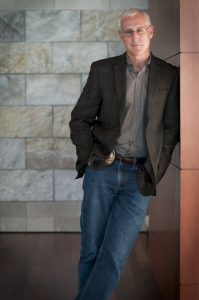
Wallace: The Resurrection is the most foundational aspect of the Christian world view. Not according to me, but to the Apostle Paul, who talks about it in 1 Corinthians 15. Basically, Paul says that, if it is a lie, believers have no hope of a resurrection of their own. But Paul also says, if the story is a lie, that means we have false witnesses – and ALL of the Gospel writers relate the resurrection story. In the end, they all agree that the resurrection actually took place, and this is something that separates Jesus from every other messianic figure. It also differentiates Christianity from every other ancient religion.
BPE: Is it possible, as some maintain, that Jesus didn’t actually die on the cross? That he merely fainted from the stress he endured and was somehow revived, once he got to the tomb?
Wallace: It’s hard not to look at the crucifixion story without seeing it through the lens of our own experience. The truth is, most of us do not have the context of dealing with a dead body.
If we find that grandma passed away in her bed overnight, we call the mortician or the medical examiner, and they take care of the body. Police officers, first responders, medical personnel and morticians know what a dead person really looks like.
In the first century, it was different. People usually buried their own, so they knew well what death looked like. And the eyewitnesses all said that Jesus was dead.
BPE: So, you don’t think it’s possible the eyewitnesses could have been mistaken?
Wallace: In my profession, if someone asks me, “Isn’t it possible that you could mistake a dead person for someone who is unconscious?” I’m just gonna laugh, because the two look nothing alike.
It all comes down to this thing we call the mortis triad.
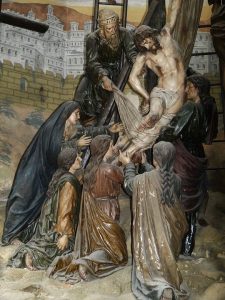
The first thing that happens when a person dies is they start to cool down almost immediately, because hot blood is no longer circulating. That’s called algor mortis. If you touch a dead person, you know that they are dead, because they are decidedly cooler than you are.
The second thing that happens is they start to get stiff. That’s called rigor mortis, and it affects their flexibility. The kind of flexibility you see in an unconscious person is noticeably different from what you’d see in a dead person.
The third thing is that once your heart is no longer pushing your blood, gravity starts to draw it. That means, if you get shot to death and fall on your back, when I get there 30 minutes later, your back will be somewhat discolored and slightly swollen.
If you die on a cross, your feet will be swollen and discolored.
These are things most of us don’t think about, because again, we have never experienced them. But they would have been obvious to any First-century eyewitness.
BPE: Aside from this mortis triad, could the eyewitnesses have seen anything else which would prove conclusively that Jesus was dead?
Wallace: That’s a great question, and the fact is they did see something unusual, which no one at the time could explain. It’s actually a piece of hidden science.

John reports that, when the Roman guards stabbed Jesus in his side, they saw water and blood come out of the wound. If you don’t know anything about body science, you would not understand that, and so the early Church fathers all allegorized it or said John was using a metaphor. What they didn’t understand is that, if you have a cardiac arrest and your heart stops beating, you will suffer one of two types of effusion. You’ll either get pericardial effusion, where water collects in the sack around your heart, but more commonly – especially if you die in an upright position – you’ll get pleural effusion where water collects around your lungs. So, if I stab you, you will see a separation of water and blood.
It’s interesting to me that no early reader of scripture appears to have understood how this was an indication that Jesus’ heart had completely stopped. I don’t think John understood it that way either; he was just reporting on what he saw.
This clearly is a case where modern science confirms the death of Jesus in a way that the ancients couldn’t comprehend. And remember, this isn’t Luke (a physician) who reported this peculiar incident. It was John – a fisherman. I just don’t think it is reasonable to maintain that Jesus wasn’t really dead.
BPE: If Jesus was really dead, what’s the next thing a crime scene investigator would have to consider?
Wallace: The next question I would ask is, who had control of the body? Who was doing the actual work of preparing Jesus to be interred?
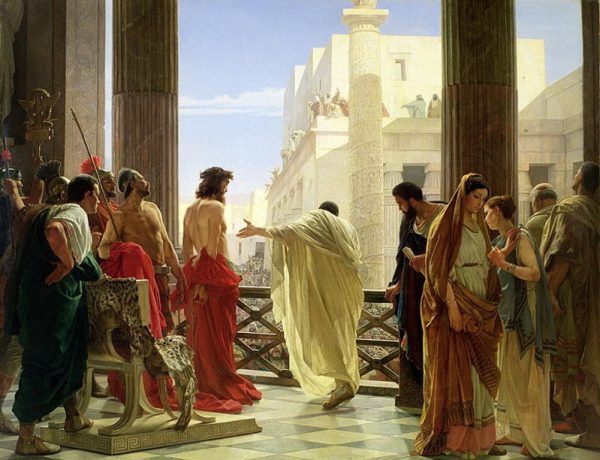
We’re told that Joseph of Arimathea went to Pontius Pilate and requested the body. Of course, Pilate wasn’t going to be inclined to release the body until he was sure that Jesus was dead. At that point, Joseph went out to buy the clothing and materials in which Jesus would be buried. What’s significant about that detail is, it was important enough to be mentioned as a second errand that day, which means more time had to pass. How much more time? We really don’t know. Remember, they had to beat the sundown before the Jewish Sabbath. But we’re certainly talking about enough time passing for that mortis triad to start taking place.
BPE: And time enough for His friends to take control of the body?
Wallace: Look, don’t you think everyone in that group wanted Jesus to still be alive? They had plenty of time in that tomb to determine that Jesus was really dead. This is why, as an Atheist, the idea that he wasn’t dead never seemed reasonable to me. What was more reasonable was that they were lying about the whole darn thing.
That, of course, would suggest a conspiracy, which as an investigator, I can tell you is not all that hard to break. And any time you have more than two people involved, the conspiracy falls apart pretty quickly.
BPE: Even-so, could the Gospel story of the resurrection be part of a conspiracy?

Wallace: Is it possible? Yes, just as if you ask me if it is possible he wasn’t really dead. But is it reasonable? My standard of proof is not beyond a possible doubt – it’s beyond a reasonable doubt. That’s why judges instruct the jury not to get lost in speculation but to only consider the evidence which has been presented.”
BPE: Were the eyewitnesses to the crucifixion and resurrection credible or credulous?
Wallace: There are a number of questions we will ask an eyewitness, to ascertain their credibility. Do they remember minor facts; are they consistent with their story? Are there points of agreement with other witnesses that would corroborate what they said? And finally, do they have a bias which would make them lie to us? That last category is the one people think about the most.
When we’re talking about Jesus, people almost always counter with, “Yeah, but those writers were all friends of Jesus. Tell me what someone who wasn’t his friend said about him.”
That seems ridiculous to me, and I’ll give you a quick example of why.
There’s a writer in the New Testament who initially wasn’t a friend of Jesus and wasn’t looking for a Messiah. His name was Levi, though we know him better as Matthew.
Matthew was a tax collector, and when Jesus went to his house one night, the room was filled with other tax collectors and prostitutes. Everyone, including the Pharisees and Jesus’ own disciples, were wondering why Jesus was hanging out with these people. If you’re looking for a guy who was not predisposed towards Jesus, but ended up being a follower and a gospel writer based on experience and observation, then Matthew is your man.

BPE: You’re saying the New Testament opens with the observations of a man who police might consider — at least in some regards — to be a hostile witness?
Wallace: Yes, and many place Matthew as one of the earliest writers. He’s someone who didn’t want to believe it, but he saw it with his own eyes.
BPE: As a detective, what would you zero in on when interviewing the witnesses?
Wallace: Here’s the tricky part. As you read their accounts, you see what appears to be contradictions; places where the story seems slightly different from one account to the next.
This happens all the time in eyewitness accounts.
If I’m the investigating officer of a crime that just happened, I’ll send my team around the neighborhood to interview potential witnesses. The next day, as I’m going through those statements, I’ll start to see the same kind of contradictions we find in the gospels. The only difference is that I can call all of the modern-day witnesses, because the crime just happened yesterday. Through careful questioning, I can start to resolve the apparent contradictions.
When you’re working a cold case, you can’t do that. This is why the apparent contradictions with the scriptures will have to linger.
What I can do is take a good hard look at the actual witness. Once I understand who these witnesses are, I can begin to understand their differences.
That’s about all you can really do with accounts that are really old. But I’ll tell you, every time I have mounted a trial, a defense attorney is going to try to make a big deal out of the differences. If you help the jury understand why there might be differences, then you’re ready to go.
BPE: What about the counter-arguments skeptics make about the truthfulness of the gospel accounts?
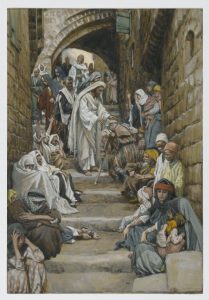
(James Tissot.~ Brooklyn Museum – Public-Domain)
Wallace: I don’t think you’ll find any serious critic who would argue about the historicity of Jesus, if not for the existence of miracles in those accounts.
Take away the miracles – He never fed 5,000, healed the sick, or walked on water; He wasn’t virgin born, and there was no resurrection – and what you are left with is this ancient sage, who preached sermons and taught in parables.
Would anybody question that? No!
No one doubts the historicity of Socrates, because there is no claim to the supernatural. But, with Jesus, the miracles anchor the over-arching claim that Jesus is God, and that is what people find repugnant. Take God out of the equation, and you can make your own choices.
If you think about it, the argument is not so much against the text or one particular piece of evidence, but it’s a pre-existing bias people bring to the table.
BPE: And biases are as old as mankind itself?
Wallace: Let me be honest here. If I’m investigating a crime from 1979, and someone says the way the suspect escaped is he flew across the room six feet in the air and vanished without leaving a footprint, I’m gonna have the same trouble with that story that Bible critics have with tales of the supernatural.
I had that exact same problem myself, when I began to investigate the Bible.
What helped me over that barrier was that, even as an Atheist, I embraced certain supernatural explanations for natural phenomena. We talked about this, when we spoke last winter about the Virgin Birth.
That’s what unlocked for me the miraculous aspects of the New Testament. If there is a being out there who could create everything from nothing, then walking on water and rising from the dead is small potatoes.
BPE: There are a number of post-resurrection sightings of Jesus recorded in the New Testament. Do you see any problems with believing the veracity of those accounts?

Wallace: Well, what I see is that the post-resurrection accounts are varied. Some are people seeing Jesus when they are alone. If that’s all we had, I’d be suspicious. But many are in group settings with puzzling differences.
There are two disciples who see Jesus on the road to Emmaus. An entire group of his followers see him in the upper room, so that would make ten people there. No number is given for the sighting on the mountaintop, but pairing that with another later passage by Paul, we could be looking at 500 eyewitnesses.
So, they’re varied on who is in the group, the number of people present, and the geographic location. To me, that is a much harder claim to defend.
BPE: How so?
Wallace: If there is a problem, say, with the encounter in the Upper Room, all you have to do is get ten people to keep their stories straight. If Mary was the only witness in the garden, all she would have to do is stick with her story forever.
But that’s not how it worked. There were apparently a whole lot more people who would have had to stick to their stories. And there was danger in holding this position
The best way to end the threat of a fledgling Christian religion is to either produce the dead body – and as a crime scene investigator, I can tell you that, once you have the body, it’s game over – or get the people to recant their story. That would also end it immediately. Those would have been the best things to do, and that never happened.
What did happen was, you had a very early development of creeds, and, to me, that was telling.
Peter, on the Day of Pentecost, affirms that Jesus rose from the dead. If you’re going to make such a claim, you don’t do it immediately. You wait until most of the enemies of Christ are dead.
Stephen was tried by some of the same people who tried Jesus, so they knew Him. So, again, for me, the early dating of the Gospels – and the early claims of the resurrection – are two of the surest ways an investigator can lock down if the story is true.
BPE: Is there any chance that the witnesses were either delusional or engaged in wishful thinking?
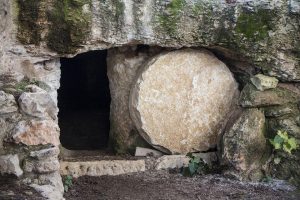
Wallace: Sure, it’s possible but again is it reasonable?
If they’re hallucinating, there’s one way to fact check it, and that’s to go back to the tomb. But then, now you’re back to an empty tomb. Then, it’s back to a conspiracy theory and all of the problems with that.
Any counter idea as to what happened rolls back to some kind of conspiracy. That’s why, as an investigator, I was never intrigued by hallucinations or wishful thinking. To me, it was either a lie or it was the truth.
BPE: Are there any other theories about the resurrection which merit serious discussion?
Wallace: Yes, and it’s one I entertained early on. That is, what if the resurrection story did not appear in the earliest gospels? What if that aspect of the Jesus story was just added later over time?
I suspected that might be the case, and so I started reading the writings of the earliest church fathers – disciples of Jesus’ original followers. If you are curious about what John was teaching on this subject, you look at the letters his disciples wrote, and you can see if they ever mention a resurrection.
I started to compile a list of the things the students of the eyewitnesses say they were taught by the eyewitnesses. You can still say it’s a lie, but at least you’d know if it was lie from the actual eyewitnesses and not something that was added over time.
I also wondered how close the various texts were to the time of the actual events. There, I discovered that, by looking at what is missing – such as something as significant as the destruction of the second temple, or places where Paul quotes the Gospel of Luke – you get the sense that these books were all written much earlier than previously thought. This gets back to what we call in criminology the chain of custody. Apply that methodology to the story of Jesus, and you’ll see that the resurrection, the miracles, the virgin birth – are all there in all their splendor. It was written early and it is robust.
That doesn’t mean it’s true, but you are knocking down the possible explanation that would describe it as a lie.
In the end, you’re going to have an evidence trail. This is what we ask all jurors to judge.
I tell jurors I cannot answer every question you may have. Nobody can. But by the end of a trial, you will have an evidence trail and from that, you can make an informed inference. That step is not one of blind faith but one of reasonable trust, given the evidence we’ve presented to you.
There’s going to be a step when you reach your verdict. The same thing is happening here.
BPE: You talked about evidence from the Bible and from the early church fathers. What about evidence from outside sources, which may either be benign secular histories or accounts that are antagonistic to Jesus and Christianity?
These are what I would call hostile eyewitness witness accounts, or intentional omissions.

Suppose we grab a guy for a burglary, and he says he wasn’t in the house; and then changes his story, when we say we have video. So then he comes up with an excuse for why he was there. It doesn’t matter what else he says. I’ll take that into court and use that against him, because he has admitted he was at the scene of the crime, when he shouldn’t have been there.
There are lots of reluctant admissions by non-Christians in the first 150 years, in which they will make some claim – usually derogatory – against Christianity. But, in order to make the derogatory claim, they have to admit some true feature of Christianity.
You see this repeatedly, whether it is Tacitus or Thallus or Mara bar Serapion. They don’t believe in Jesus, but they reluctantly admit that he was real, he was called the Christ, he was executed by Pontius Pilate, his followers were accused of burning down Rome, and so forth. If you compile a second list with all of the things they say against Christianity and Jesus, you’ll be impressed with all of the details they actually confirm about Jesus.
Again, this is evidence from the enemies of Christ.
Even if you lost every New Testament, you could still make a case for the historicity and the deity of Christ, solely based on what other people said about him.
BPE: From your standpoint as an investigating officer, are there any open ends to this case that you would like to see closed?
Wallace: Oh, gosh, are you kidding me? There’s tons! There are places where you wonder how Jesus got from here-to-there, because nobody talks about it. There will always be questions like that, but the real issue is: Are my questions as an investigator tied up with essential claims, or are they wrapped around non-essential details, which might give me valuable insight but have no bearing on the historicity of Jesus or the over-arching claims of Christianity?
There are reasons why Christians are still debating certain issues after two thousand years. I have my own theories on some of those issues, but the day will come when we can each ask God and find out just how close we all were.
As an investigator, I am comfortable believing in the resurrection of Jesus. It’s not just something that assures a resurrection for believers and opens the door to a new life with Christ, but if you look at the claims of Jesus historically, you’ll see that no other world view has had the kind of impact on history that Jesus has had. And that is exactly the kind of impact I would expect Him to have, if in fact Jesus was who he said he was.
That’s why, with the resurrection, we kind of end off where we started.
Jesus staked everything He said and did on the resurrection.
The magicians in ancient Egypt were able to mimic some of Moses’ miracles to the satisfaction of Pharaoh. But this idea of rising from the dead is a miracle of such a unique caliber that it separates Jesus from any other person who ever lived.
Bahá’u’lláh, Confucius, Buddha, and Mohamad all wrote beautiful things. But none of those guys rose from the grave. And in my sarcastic way as a skeptical investigator, I can tell you this – if you’re someone who rose from the grave, I’ll have a tendency to listen to what you say.
* * * * *
Editor’s note: This story is part of an ongoing series which looks at the places and people that make up the rich history and diverse nature of spirituality, belief, and observance in Baltimore and beyond. Read the series here.
(Lede photo/image credit Pixbay – No attribution required.)

Anthony C. Hayes is an actor, author, raconteur, rapscallion and bon vivant. A one-time newsboy for the Evening Sun and professional presence at the Washington Herald, Tony’s poetry, photography, humor, and prose have also been featured in Smile, Hon, You’re in Baltimore!, Destination Maryland, Magic Octopus Magazine, Los Angeles Post-Examiner, Voice of Baltimore, SmartCEO, Alvarez Fiction, and Tales of Blood and Roses. If you notice that his work has been purloined, please let him know. As the Good Book says, “Thou shalt not steal.”


Reminds me of the book “A case for Christ”